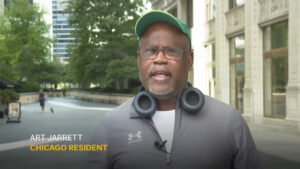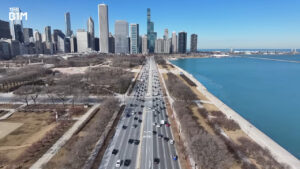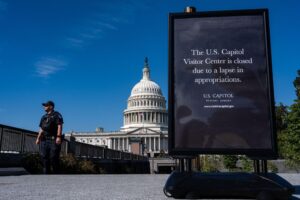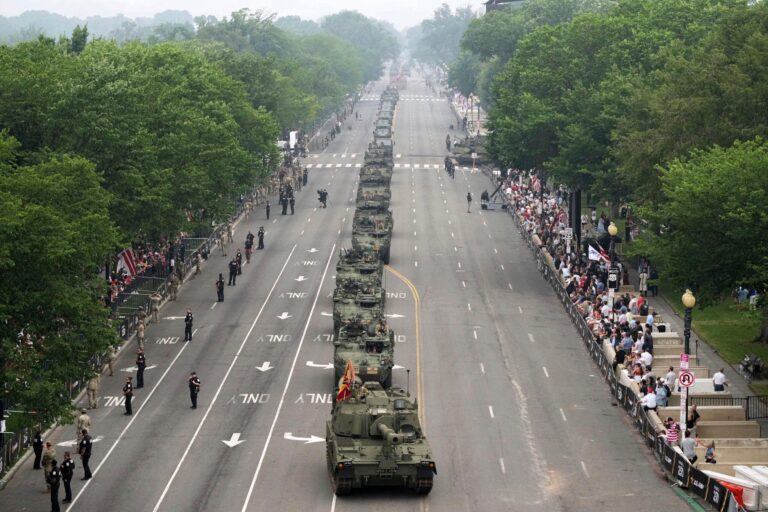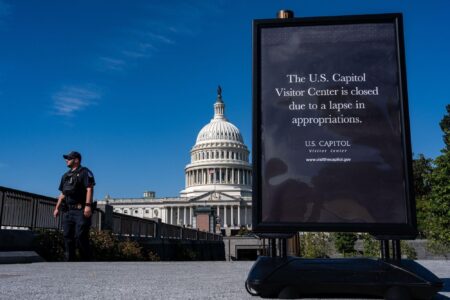Washington, D.C. — As the city gears up for the highly anticipated military parade led by former President Donald Trump, Washington, D.C. is undergoing a profound transformation. Authorities have installed over 18 miles of security fencing across critical areas, underscoring the extensive precautions and logistical efforts underway. These barriers serve as a clear indicator of the city’s readiness and vigilance in hosting an event that is expected to draw significant attention and debate.
Comprehensive Security Strategy for the DC Military Parade
In preparation for the forthcoming military parade, Washington, D.C. officials have implemented a multi-layered security framework aimed at safeguarding attendees and ensuring smooth event operations. The deployment of more than 18 miles of fencing along designated parade corridors is designed to regulate crowd movement and prevent unauthorized entry. This physical perimeter is reinforced by a substantial law enforcement presence, including over 500 personnel from local police, federal agencies, and the National Guard, establishing a robust security environment throughout the city.
Additional security components include:
- Cutting-edge surveillance technology: Real-time monitoring through elevated CCTV cameras and drone patrols.
- Controlled access points: Multiple checkpoints staffed to conduct thorough screenings of attendees.
- Unified communication systems: Seamless integration of communication channels among various agencies to enhance coordination.
- On-site medical support: Several strategically located emergency medical stations prepared to respond swiftly to any incidents.
| Security Component | Specifications |
|---|---|
| Fencing | Over 18 miles surrounding parade route |
| Personnel | 500+ officers including National Guard units |
| Technology | Drone surveillance and extensive CCTV coverage |
| Medical Facilities | Five rapid response stations along route |
Effects of Security Fencing on Traffic Patterns and Local Communities
The extensive installation of fencing throughout central Washington, D.C. has led to notable disruptions in traffic flow, compelling commuters and residents to adapt to new travel conditions. Major arteries that typically experience heavy traffic have been partially or fully closed, causing detours that can add between 20 to 40 minutes to travel times during peak periods. Public transit systems have also been adjusted, with rerouted bus and Metro lines complicating commutes for those unfamiliar with the changes. Local residents have expressed concerns regarding increased noise levels due to the amplified police presence and difficulties accessing neighborhood businesses.
Experts and community representatives have highlighted several key impacts and considerations:
- Emergency response: Modified routes necessitate careful planning to prevent delays in critical services.
- Pedestrian navigation: Designated walkways aim to ensure safety but may cause confusion among pedestrians.
- Economic consequences: Small businesses report a downturn in customer visits attributed to limited accessibility.
| Aspect | Impact | Timeframe |
|---|---|---|
| Traffic Congestion | Longer delays on primary routes | Parade day plus two days |
| Public Transit | Route changes and additional stops | Parade day only |
| Local Commerce | Decline in foot traffic | Duration of parade week |
| Resident Mobility | Restricted street access | Throughout event |
Federal and Local Agency Collaboration for Parade Security
To guarantee the successful and secure execution of the military parade, a comprehensive partnership has been forged between federal entities and local government bodies. Agencies such as the Department of Homeland Security, the Pentagon, and the Metropolitan Police Department have engaged in detailed planning sessions focusing on logistics, security enforcement, and crowd control. This alliance is designed to uphold public safety while minimizing disruptions throughout the city, supported by real-time communication networks for swift incident response.
Key elements of this interagency cooperation include:
- Installation of over 18 miles of fencing to define secure zones and manage access.
- Collaborative traffic management plans to reroute vehicles and maintain emergency pathways.
- Shared intelligence and surveillance efforts to identify and mitigate potential threats.
- Community engagement programs to keep residents and businesses informed about event-related changes.
| Agency | Function | Primary Responsibility |
|---|---|---|
| U.S. Armed Forces | Parade Coordination | Organizing parade units and scheduling |
| Metropolitan Police Department | Security & Traffic Control | Managing crowds and directing traffic diversions |
| Secret Service | Protection Detail | Safeguarding VIPs and officials |
| Federal Emergency Management Agency (FEMA) | Emergency Preparedness | Medical and safety incident readiness |
Guidance for Commuters and Businesses During Parade Preparations
Travelers are encouraged to identify alternative routes well in advance of the parade, as numerous downtown streets will be closed off due to the extensive fencing. Those relying on public transit should prepare for potential delays and altered routes on Metro and bus services. Planning for earlier departures and flexible schedules can help alleviate the impact of these changes.
Businesses located near the parade corridor should anticipate operational challenges and communicate proactively with customers and suppliers. Many establishments may experience reduced foot traffic or require temporary adjustments to access during the event setup and execution. The following table outlines practical steps to minimize disruptions:
| Suggestion | Details |
|---|---|
| Customer Communication | Utilize social media and signage to inform about access changes. |
| Delivery Coordination | Arrange alternative drop-off locations with suppliers. |
| Operating Hours | Consider adjusting business hours around parade dates. |
| Staff Information | Provide updates on transit changes and parking options. |
Final Thoughts on DC’s Military Parade Preparations
As Washington, D.C. prepares to host this prominent military parade, the extensive security infrastructure—including the installation of more than 18 miles of fencing—reflects the city’s dedication to maintaining order during a highly visible and politically significant occasion. Officials continue to navigate the delicate balance between ensuring public safety and honoring the event’s symbolic importance. With preparations well underway, both residents and visitors anticipate a memorable spectacle that will leave a lasting mark on the capital’s history and urban environment.
